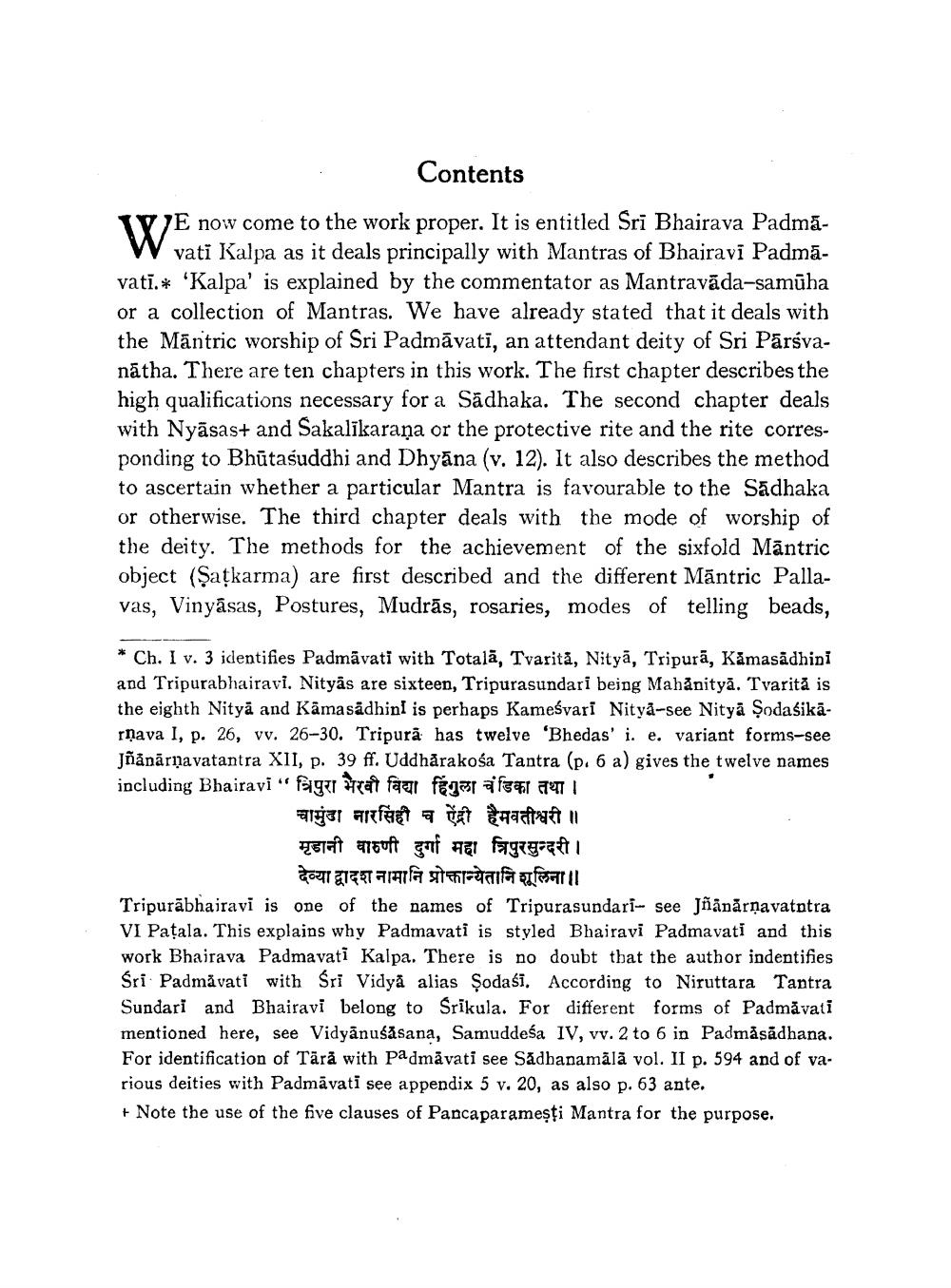________________
Contents
IVJE now come to the work proper. It is entitled Sri Bhairava Padma
V vati Kalpa as it deals principally with Mantras of Bhairavi Padmavati.* 'Kalpa' is explained by the commentator as Mantravāda-samūha or a collection of Mantras. We have already stated that it deals with the Māntric worship of Sri Padmāvatī, an attendant deity of Sri Pārsvanātha. There are ten chapters in this work. The first chapter describes the high qualifications necessary for a Sadhaka. The second chapter deals with Nyāsas+ and Sakalīkaraņa or the protective rite and the rite corresponding to Bhūtasuddhi and Dhyāna (v. 12). It also describes the method to ascertain whether a particular Mantra is favourable to the Sadhaka or otherwise. The third chapter deals with the mode of worship of the deity. The methods for the achievement of the sixfold Māntric object (Şatkarma) are first described and the different Māntric Pallavas, Vinyasas, Postures, Mudrās, rosaries, modes of telling beads,
* Ch. I v. 3 identifies Padmavati with Totalā, Tvarită, Nitya, Tripurā, Kāmasādhini and Tripurabhairavi. Nityās are sixteen, Tripurasundari being Mahānityā. Tvarită is the eighth Nityā and Kämasādhini is perhaps Kameśvarī Nitya-see Nitya Sodašikārņava I, p. 26, vv. 26–30. Tripura has twelve 'Bhedas' i. e. variant forms-see jñānārņavatantra XII, p. 39 ff. Uddhārakośa Tantra (p. 6 a) gives the twelve names including Bhairavi" Fagar mat fagl fegar afsær at
चामुंडा नारसिंही च ऐंद्री हैमवतीश्वरी ॥ मृडानी वारुणी दुर्गा महा त्रिपुरसुन्दरी ।
देव्या द्वादश नामानि प्रोक्तान्येतानि शूलिना। Tripurābhairavi is one of the names of Tripurasundari- see Jñânārņavatntra VI Patala. This explains why Padmavati is styled Bhairavi Padmavati and this work Bhairava Padmavati Kalpa. There is no doubt that the author indentifies Sri Padmavati with Sri Vidya alias Sodasi. According to Niruttara Tantra Sundari and Bhairavi belong to Srikula. For different forms of Padmavati mentioned here, see Vidyānušāsana, Samuddeśa IV, vv. 2 to 6 in Padmăsădhana. For identification of Tārå with Padmavati see Sadhanamālā vol. II p. 594 and of various deities with Padmāvati see appendix 5 v. 20, as also p. 63 ante. + Note the use of the five clauses of Pancaparameşti Mantra for the purpose.




